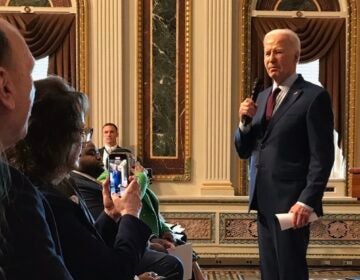Death penalty makes 2016 seem like 1816

Why kill people who kill people to show killing is wrong?

Why kill people who kill people to show killing is wrong?
That’s a question I asked in a column way back in 2011, after convicted murderer Robert W. Jackson III became Delaware’s first execution since 2005.
Jackson was just 18 and a drug addict when he killed 47-year-old Elizabeth Girardi during a botched robbery. Jackson was given the death penalty and executed.
Meanwhile Thomas Capano, convicted of killing 28-year-old Ann Marie Fahey and shoving her body into a cooler, ended up with life without parole.
Capano was rich and white. Jackson was poor and black. You tell me why they ended up with their respective fates.
I bring all this up because legislators once again decided to cling to a 19th century form of justice by voting down a bill that would have abolished the death penalty in Delaware. In recent years, this has become an annual game of bills getting voted down amid the heartfelt pleas from relatives of people who have suffered.
“He victimized Lindsey again and again,” a friend of the Bonistall family whose daughter, Lindsey, was raped and murdered in 2005 by James E. Cooke Jr., Mary Cairns said. “Her killer deserves the death penalty. Please don’t fail us now.”
Of course, the circumstances are horrible, and it’s easy to allow the notion of revenge to wash over you as Cooke waits for his inevitable execution on death row. But justice and revenge are two very separate things, and at this point the desire for payback seems to be the only justification for keeping this arcane and brutal form of punishment around.
Despite what police officers say, there is no evidence the death penalty acts as a deterrent for criminals to avoid murdering someone. Plus, putting criminals on death row is far more costly than sentencing them to life without parole.
The death penalty is also applied in a discriminatory manner, overwhelmingly targeting poor and minority defendants. In Delaware, 70 percent of all death sentences were imposed on cases where the victim was white, despite the fact the majority of murder victims during the same period were black.
And if that’s not enough to convince you, innocent people are killed on death row.
Columbia University law professor James Liebman and a team of students published a 6-year study in the Human Rights Law Review that concluded Carlos DeLuna, executed in 1989 for stabbing a gas station clerk to death, was innocent. They note that shoddy police work, the failure to pursue a similar-looking suspect and a weak, government-provided defense led to DeLuna’s downfall.
Since 1976, 156 people awaiting their execution have been exonerated and freed, while 1,426 have been executed. That means for about every 10 inmates put to death, one was found innocent and freed.
Is vengeance still a good enough reason to justify the death of an innocent person at the hands of the state?
The obvious answer is no, and as a result neighboring states have done away with this cruel form of punishment. New Jersey banned the death penalty in 2007, and Maryland banned it in 2013. Pennsylvania Governor Tom Wolf issued a moratorium last year calling the death penalty, “A flawed system [that has proved itself to be] ineffective, unjust and expensive.”
Gov. Jack Markell has called the death penalty an “instrument of imperfect justice” and vowed to sign any repeal into law. Yet it continues, still unable to overcome the cabal of support from prosecutors and law enforcement officials who continue to wield too heavy a hand on our public policy.
I’m not a religious person, but last time I checked the state of Delaware isn’t God. And as one of the characters in Russian author Anton Chekhov’s “The Bet” notes, “It has not the right to take away what it cannot restore when it wants to.”
He wrote those words in 1889. Welcome to the 21st century.
——
Rob Tornoe is a cartoonist and WHYY contributor. Follow Rob on Twitter @RobTornoe
WHYY is your source for fact-based, in-depth journalism and information. As a nonprofit organization, we rely on financial support from readers like you. Please give today.





